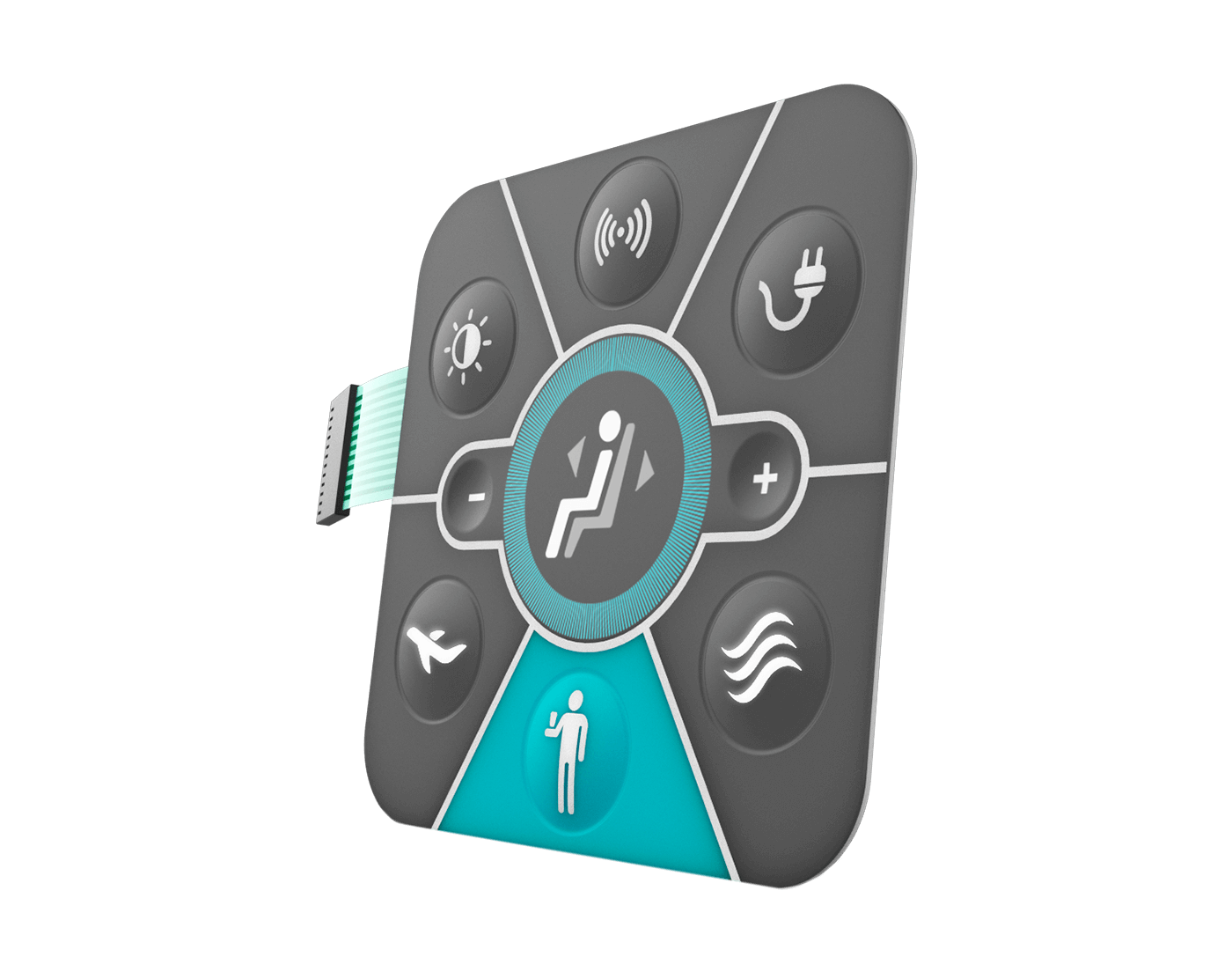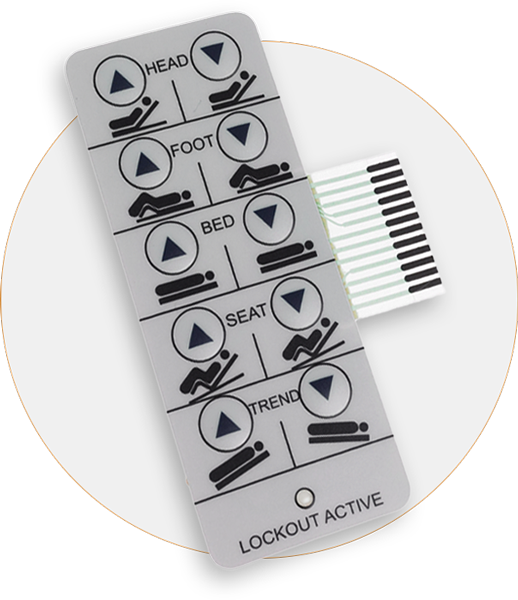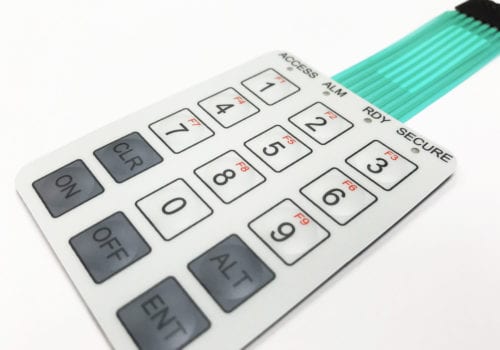Recognizing the Significance of Membrane Switches in Interface
Membrane buttons are integral components in the style of efficient customer interfaces, facilitating not only performance yet also enhancing aesthetic charm and individual communication. As we discover the various advantages and future trends linked with Membrane modern technology, it becomes clear that these switches are more than simply parts; they stand for a merging of innovation and practicality.
What Are Membrane Switches?

The spacer layer, which has glue buildings, permits for the splitting up of the circuit layer from the overlay, guaranteeing that the switch continues to be in a non-activated state till pushed. When stress is used to the overlay, it compresses the spacer layer, linking the void and completing the circuit in the underlying layer. This design not just minimizes the physical space needed for traditional mechanical buttons however also boosts the longevity of the gadget, as Membrane buttons are typically immune to dirt, moisture, and various other ecological factors.
Generally discovered in applications ranging from customer electronics to clinical devices, Membrane switches are indispensable to contemporary technology, supplying a easy to use and reliable interface that lines up with modern style needs.
Advantages of Membrane Switches
While countless switch innovations exist, Membrane Switches deal distinctive advantages that make them specifically desirable in numerous applications. One of the main advantages of Membrane switches is their compact layout, which permits space-saving executions in devices where realty is limited. Their thin profile not just improves visual appeal but additionally facilitates lightweight building.
Another considerable benefit is their resistance to ecological factors. Membrane switches are commonly sealed against wetness, dirt, and pollutants, making them excellent for use popular atmospheres, such as clinical tools and commercial equipment. This sturdiness prolongs the life-span of the button, minimizing upkeep prices and boosting reliability.
Furthermore, Membrane switches can be personalized to satisfy certain style demands, integrating special graphics and shades that boost customer communication. Their responsive responses alternatives can additionally be customized to supply an enjoyable user experience. Additionally, Membrane switches are cost-effective, particularly in high-volume applications, as they can be generated successfully.
Applications in Different Industries

In the customer electronics field, Membrane switches are widespread in gadgets such as microwaves, washing equipments, and remotes. Their tactile responses and aesthetic alternatives improve customer experience while supplying a sleek, modern-day look. Furthermore, vehicle suppliers utilize Membrane switches in control panel controls and infotainment systems, where area is restricted, and individual involvement is vital.
Moreover, the commercial sector leverages Membrane buttons in control panels for equipment and devices, permitting intuitive procedure in often extreme environments. Their resistance to chemicals and wetness makes certain longevity and dependability in these applications. On the whole, the flexibility of Membrane Switches adds significantly to their widespread usage, making them indispensable in various technical domain names.
Design Considerations for Membrane Buttons

When developing Membrane buttons, numerous vital considerations must be thought about to make sure ideal capability and customer experience. To start with, the choice of materials is important; selecting durable, top quality substrates can improve the switch's durability and resistance to environmental elements such as wetness and temperature fluctuations.
Second of additional hints all, the design of the graphic overlay need to prioritize clearness and convenience of usage. Symbols and message must be readable, and the design ought to help with instinctive interaction (membrane switches). Furthermore, responsive feedback is essential; integrating a tactile dome or various other mechanisms can boost the user experience by giving physical confirmation of activation
One more important aspect is the switch's electric performance. Designers must make certain that the conductive traces are appropriately developed to minimize resistance and over here prevent signal interference. This entails examining the required actuation pressure and guaranteeing compatibility with the digital elements they will user interface with.

Future Trends in Membrane Technology
As innovation remains to advancement, Membrane switches are poised to advance considerably, driven by technologies in materials and producing strategies. One emerging pattern is the incorporation of sophisticated products, such as conductive inks and flexible substrates, which enhance toughness and reduce the general weight of Membrane buttons. These materials not only enhance the responsive reaction however additionally permit the style of buttons that can hold up against harsher environmental conditions.
Additionally, the assimilation of touch-sensitive modern technologies is transforming traditional Membrane Switches right into even more interactive customer interfaces. Capacitive touch sensors embedded within Membrane switch panels can offer a much more receptive and instinctive user experience, aligning with the growing demand for sleek, contemporary designs in consumer electronics.
Furthermore, improvements in printing methods, such as electronic and 3D printing, allow fast prototyping and personalization of Membrane switches. This versatility enables makers to respond faster to market demands and consumer choices.
Last but not least, sustainability is coming to be a substantial emphasis, with makers checking out environment-friendly products and processes. As these trends unfold, the future of Membrane innovation guarantees improved functionality, visual allure, and ecological obligation, solidifying their duty in innovative interface across various sectors.
Verdict
In verdict, Membrane Switches stand for a crucial part in the style of customer interfaces, combining performance with aesthetic versatility. As improvements in innovation proceed, the evolution of Membrane buttons is expected to additional improve user interfaces, driving advancement and boosting usability in a progressively intricate technological landscape.
Membrane buttons are indispensable components in the layout of effective individual interfaces, promoting not only performance however additionally enhancing aesthetic charm and individual communication.Membrane Switches serve as an important element in numerous customer interfaces, helping with a seamless interaction in between customers and digital tools.While numerous switch innovations exist, Membrane Switches offer unique benefits that make them specifically preferable in numerous applications.Moreover, Membrane switches can be personalized to satisfy certain style demands, more integrating special graphics and shades that boost customer communication.In final thought, Membrane Switches represent an important component in the design of user interfaces, combining functionality with aesthetic flexibility.
Comments on “Choosing the Right Membrane Switches for Your Product’s Needs”